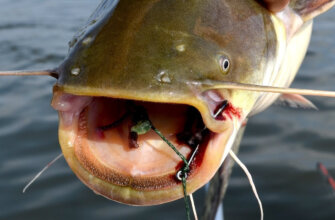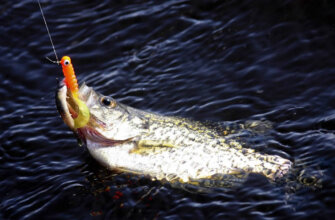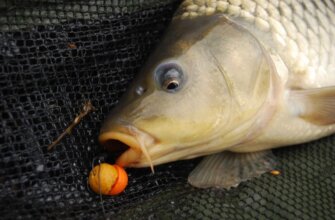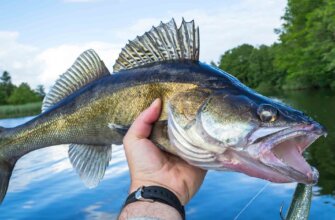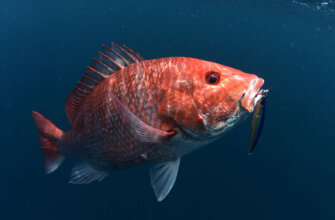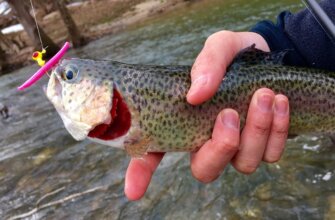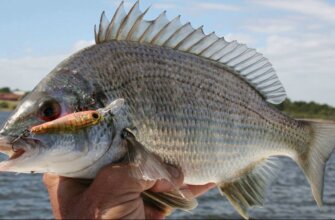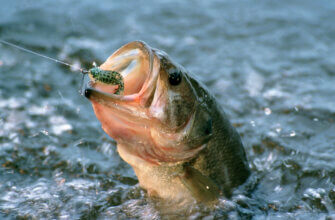Bluegill, also known as bream or sunfish, is a popular freshwater fish species found in North America. It is known for its colorful appearance and delicious taste, making it a popular target for anglers.
10 best bait for bluegill
Bluegill fishing is a popular pastime, and using the right bait can significantly improve your chances of success.
Here are ten effective bait options for bluegill fishing, along with some details about how to use them:
- Worms. Live worms are perhaps the most traditional and effective bait for bluegill. Thread a small section of worm onto a hook and cast it near the shoreline or underwater structure where bluegill are known to gather.
- Crickets. Bluegill find crickets irresistible. Hook a live cricket through the collar and cast it into the water. Allow it to float on the surface or gently twitch it to attract nearby bluegill.
- Waxworms. These small, soft-bodied larvae are excellent bluegill bait. Hook a waxworm and cast it near weed beds, fallen trees, or other areas where bluegill are likely to be feeding.
- Small Minnows. If you have access to live minnows, they can be a great bait option. Use small-sized minnows, around 1-2 inches long, and hook them lightly through the lips or back. Drop your baited line near submerged vegetation or around structures to attract bluegill.
- Artificial Jigs. Tiny jigs in various colors and patterns are highly effective for bluegill fishing. Cast the jig near the shoreline or around submerged cover, then slowly reel it in with gentle twitches to mimic a small prey item.
- Small Grubs. Soft plastic grubs in natural colors, such as chartreuse or brown, are enticing to bluegill. Rig them on a small jig head and cast near underwater structure or weed beds, then retrieve them with a slow and steady reel.
- Bread. Bluegill can be attracted to pieces of bread, particularly when they are in a feeding frenzy. Tear off small chunks of bread and mold them onto a small hook or use a small dough ball as bait. Cast it out and wait for bluegill to bite.
- Corn. Canned sweet corn kernels make a cheap and effective bluegill bait. Place a few kernels on a small hook or use a small section of corn on a hair rig. Cast it near vegetation or other areas where bluegill are likely to be feeding.
- Fly Fishing Flies. Bluegill can be enticed by various fly patterns, such as small poppers, nymphs, or wet flies. Cast your fly near the surface or subsurface, and use a slow retrieve with occasional twitches to attract bluegill.
- Small Topwater Lures. Bluegill can be triggered by small topwater lures, like poppers or propeller baits. Cast the lure near the shoreline or submerged cover, and use a slow and steady retrieve with occasional pauses to imitate a struggling insect.
Worms
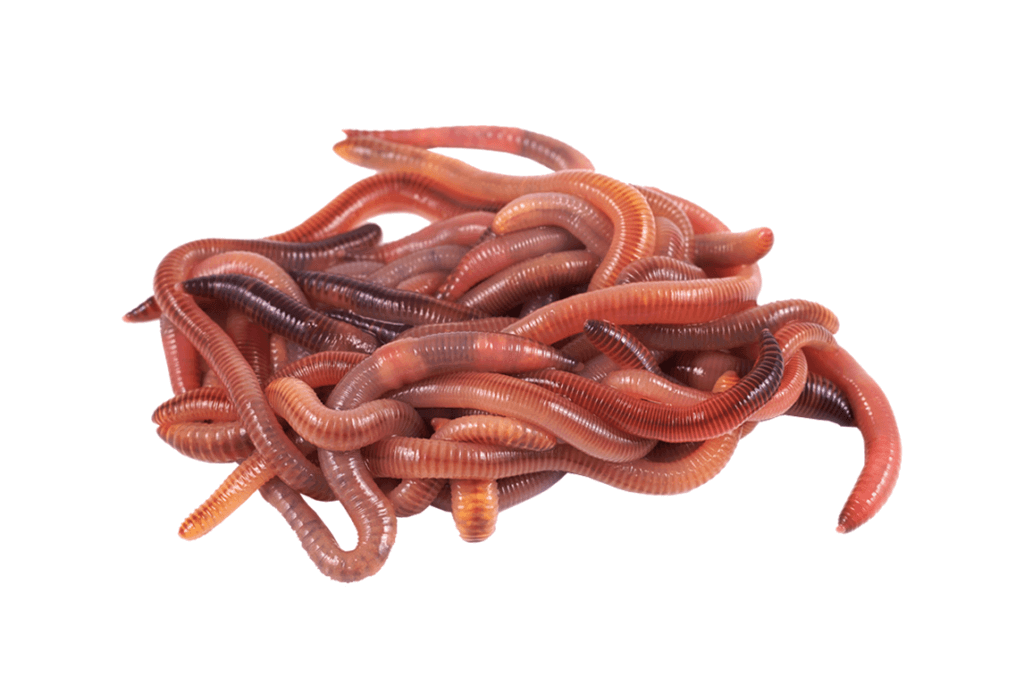
Worms are a highly effective bait for bluegill fishing. Bluegills are known to be opportunistic feeders and are attracted to live worms due to their natural movement and scent.
Here are a few tips for using worms as bait for bluegill fishing:
- Choose the right type of worms: Red wigglers and nightcrawlers are the most commonly used worms for bluegill fishing. Red wigglers are smaller and work well for smaller bluegills, while nightcrawlers are larger and can attract bigger fish.
- Hook selection: Use a small fishing hook appropriate for the size of the worm you are using. Bluegills have relatively small mouths, so a small hook will increase your chances of hooking them effectively.
- Thread the worm onto the hook: Start by inserting the hook tip into the head of the worm and then slide it along the length of the worm, leaving a portion of the worm dangling freely. Ensure the hook is completely covered, leaving no exposed metal.
- Add weight if necessary: If you’re fishing in deeper waters or if there’s a current, you may need to add some weight to your setup to help your bait sink to the desired depth. Split shot weights or small sinkers can be used for this purpose.
- Present your bait strategically: Bluegills tend to feed near structures such as submerged logs, weed beds, or around docks. Cast your bait near these areas and allow it to sink slowly. You can also use a bobber to suspend the worm at a specific depth.
- Practice patience and pay attention: Bluegills can sometimes nibble on the worm without fully taking the bait. When you feel a nibble or see the bobber move, wait a moment before setting the hook. Give the bluegill enough time to fully take the bait before gently reeling it in.
Crickets
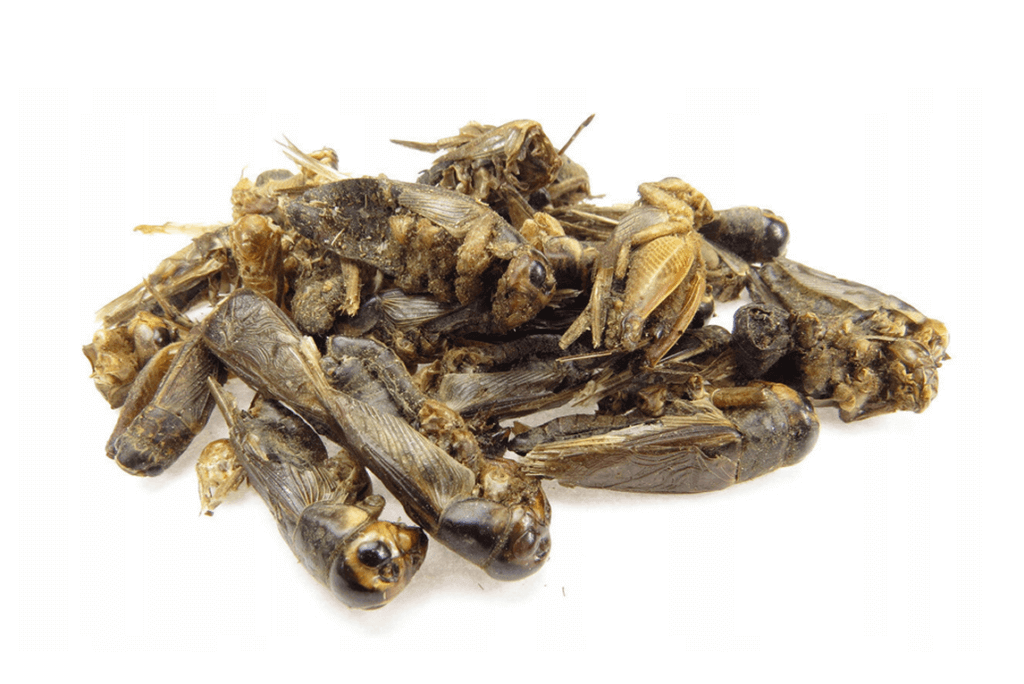
Using crickets as bait for bluegill fishing can be a highly effective strategy. Bluegill are known to be attracted to live insects and often feed on crickets in their natural habitat. Here are some tips on using crickets for bluegill fishing:
- Acquire live crickets: Purchase or catch live crickets for fishing. You can find them at bait and tackle shops or collect them from your local area.
- Hook selection: Use a small, lightweight hook appropriate for bluegill fishing. Size 6 to 10 hooks are generally suitable.
- Hooking the cricket: Thread the hook through the cricket’s back or behind its head, ensuring it remains alive and active on the hook. Be careful not to injure the cricket excessively, as a lively and natural presentation will attract bluegill.
- Use a bobber: Attach a small bobber or float to your fishing line to help suspend the cricket at the desired depth. Bluegill tend to feed near the surface or in shallow water, so adjust the bobber accordingly.
- Cast and wait: Cast your baited hook and bobber into areas where bluegill are likely to be present, such as near vegetation, fallen trees, or underwater structures. Allow the cricket to float naturally and wait for a bluegill to bite.
- Slow retrieval: If you prefer not to use a bobber, you can also try slowly retrieving the cricket through the water. This mimics the movement of a live insect and can entice bluegill to strike.
- Patience and observation: Bluegill can be finicky at times, so it’s essential to exercise patience. Observe the water for any signs of bluegill activity, such as ripples or disturbances near the surface. If you don’t get a bite, consider adjusting the depth or location.
Waxworms
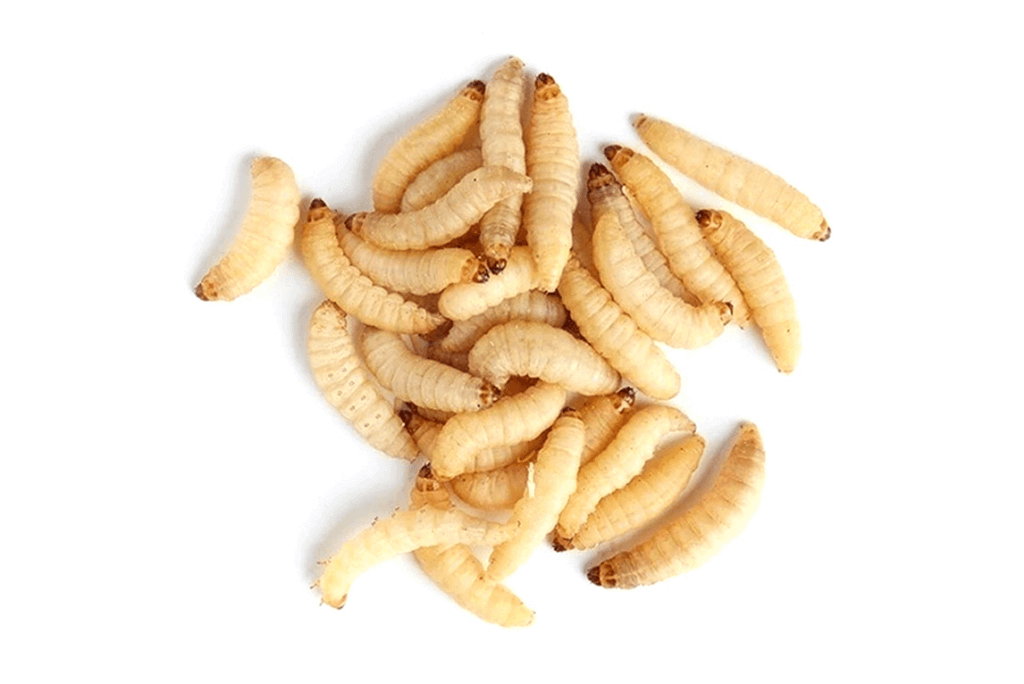
Waxworms are a popular bait for bluegill fishing. Bluegill, also known as sunfish, are known to be voracious eaters and will readily take small live baits like waxworms.
Here’s some information about using waxworms for bluegill fishing:
- Bait presentation: When using waxworms, it’s essential to present them in a way that attracts bluegill. You can thread a single waxworm onto a small hook or use multiple waxworms to create a small cluster. Bluegill have small mouths, so it’s best to use smaller hooks, such as size 8 to 12, to increase your chances of hooking them.
- Rigging options: There are various ways to rig your waxworms for bluegill fishing. One common method is to use a simple bobber setup. Attach a small bobber to your fishing line, followed by a small split shot sinker a foot or so above the hook. This setup will allow you to suspend the waxworm at the desired depth, which is usually a few feet below the surface.
- Location: Bluegill can be found in lakes, ponds, rivers, and other freshwater bodies. They tend to congregate near structures like submerged vegetation, fallen trees, docks, or rocky areas. Look for these types of features and cast your bait near them to increase your chances of finding bluegill.
- Time of day: Bluegill are generally more active during the early morning and late afternoon. They may also feed actively during cloudy days or in shaded areas. However, bluegill can be caught throughout the day, so it’s worth trying different times and conditions to see what works best.
- Additional tips: Bluegill have relatively small mouths, so it’s important to be patient when setting the hook. Wait for a solid tug or for the bobber to submerge before setting the hook. If you’re not getting bites, try adjusting the depth at which you’re fishing or moving to a different location.
Small Minnows
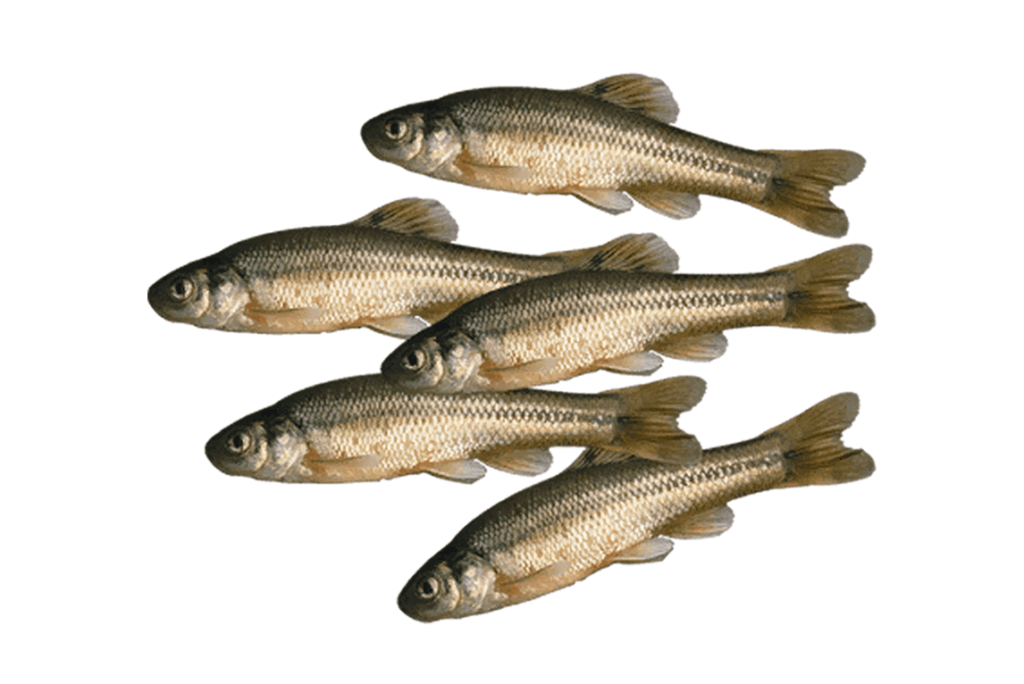
Using small minnows as bait is an effective method for targeting bluegill. Bluegill are known to be voracious feeders and are attracted to small live baitfish.
Here are some common choices for using small minnows when targeting bluegill:
- Fathead Minnows: Fathead minnows are a popular choice for bluegill fishing. They are small, hardy, and readily available at bait shops. Bluegill find them irresistible, and they can be hooked through the lips or behind the dorsal fin using a small hook.
- Rosy Red Minnows: Rosy red minnows are similar to fathead minnows but have a reddish-orange coloration. Bluegill are often attracted to the bright color, making rosy red minnows an effective bait option. Hook them in a similar manner as fathead minnows.
- Golden Shiners: Golden shiners are slightly larger than fathead or rosy red minnows, but bluegill will still readily take them. These baitfish can provide more of a challenge for larger bluegill, and you may want to use a slightly larger hook to accommodate their size.
- Emerald Shiners: Emerald shiners are another baitfish option that bluegill find appealing. They have a shimmering silver coloration and a slim profile. Hook them through the lips or just behind the dorsal fin to present them naturally to bluegill.
Artificial Jigs
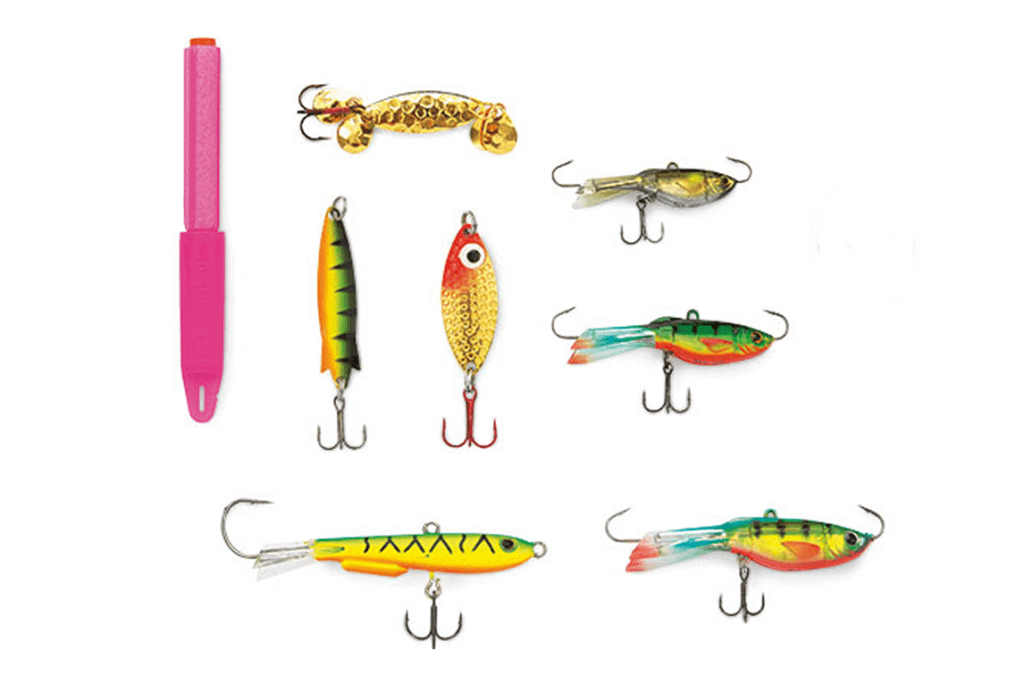
Artificial jigs are a popular and effective choice for targeting bluegill. Jigs are versatile lures that can imitate various types of prey and are designed to attract the attention of bluegill. Bluegill are known for their voracious appetites and will readily strike at small, realistic-looking jigs. Here are a few types of artificial jigs that work well for bluegill fishing:
- Marabou Jigs: Marabou jigs consist of a lead head and a fluffy marabou feather tail. The marabou feathers create a lifelike action in the water that attracts bluegill. Choose colors like black, white, yellow, or chartreuse for optimal visibility.
- Rubber/Soft Plastic Jigs: Soft plastic jigs, such as tube jigs or curly tail grubs, can be very effective for bluegill. These jigs mimic small baitfish or insects and can be fished with a variety of techniques, including a steady retrieve, jigging, or a subtle twitching motion.
- Micro Crankbaits: Tiny crankbaits designed for panfish can be irresistible to bluegill. Look for shallow-running models that imitate small minnows or insects. The wobbling action and diving depth will entice bluegill to strike.
- Beetle Spins: Beetle spins are a popular option for bluegill fishing. These jigs consist of a small spinner blade attached to a lead head with a soft plastic or hair body. The spinner blade creates flash and vibration, attracting the attention of bluegill.
- Micro Jigs: Micro jigs, often referred to as ice fishing jigs, are small and compact, making them ideal for targeting bluegill. These jigs can be tipped with bait, such as a small piece of worm or maggot, to enhance their effectiveness.
Small Grubs
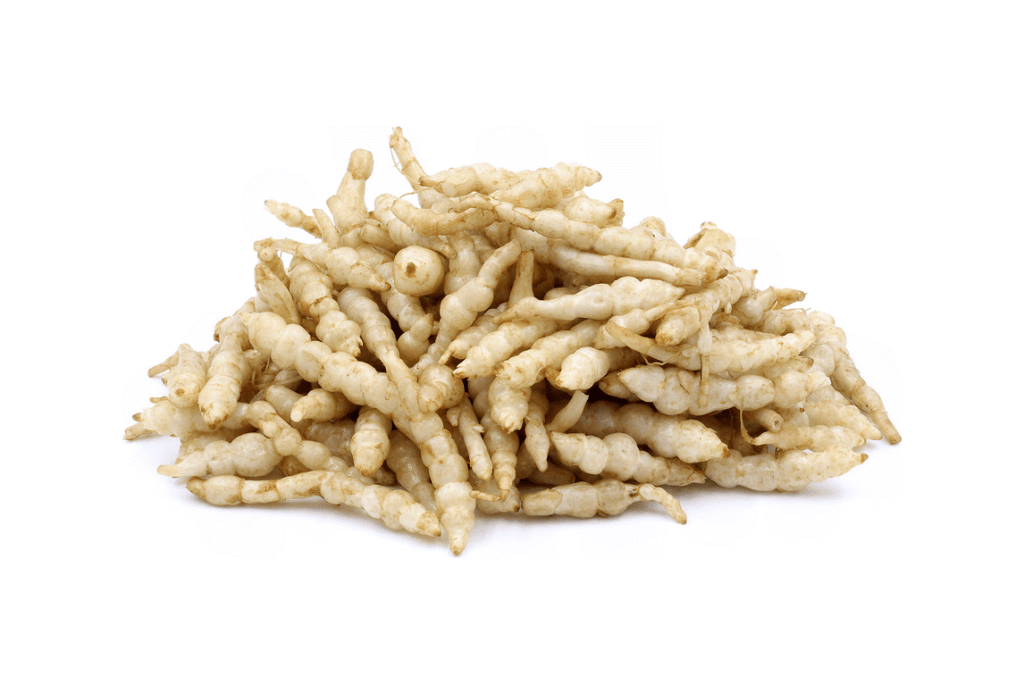
Small grubs are an effective bait option for bluegill fishing. Bluegill are attracted to the natural movement and scent of grubs, which makes them a popular choice among anglers.
Here are a few small grub options that can be effective:
- Waxworms: These small, soft-bodied larvae of wax moths are a popular choice for bluegill fishing. They are readily available at bait and tackle shops and are known to attract bluegill.
- Mealworms: Another common choice for bluegill fishing, mealworms are the larvae of darkling beetles. They have a tough outer skin, which makes them durable and long-lasting as bait.
- Redworms: Redworms, also known as red wigglers, are small earthworms that are often used for bluegill fishing. They have a lively wiggle that can entice bluegill to strike.
- Maggots: Maggots are the larvae of various fly species and can be used as bait for bluegill. They are particularly effective when fishing in cooler water temperatures.
- Berkley Gulp! Alive! Minnow Grubs: These soft plastic grubs are infused with fish-attracting scent and are available in various colors and sizes. They have a realistic swimming action and can be a productive choice for bluegill fishing.
Bread
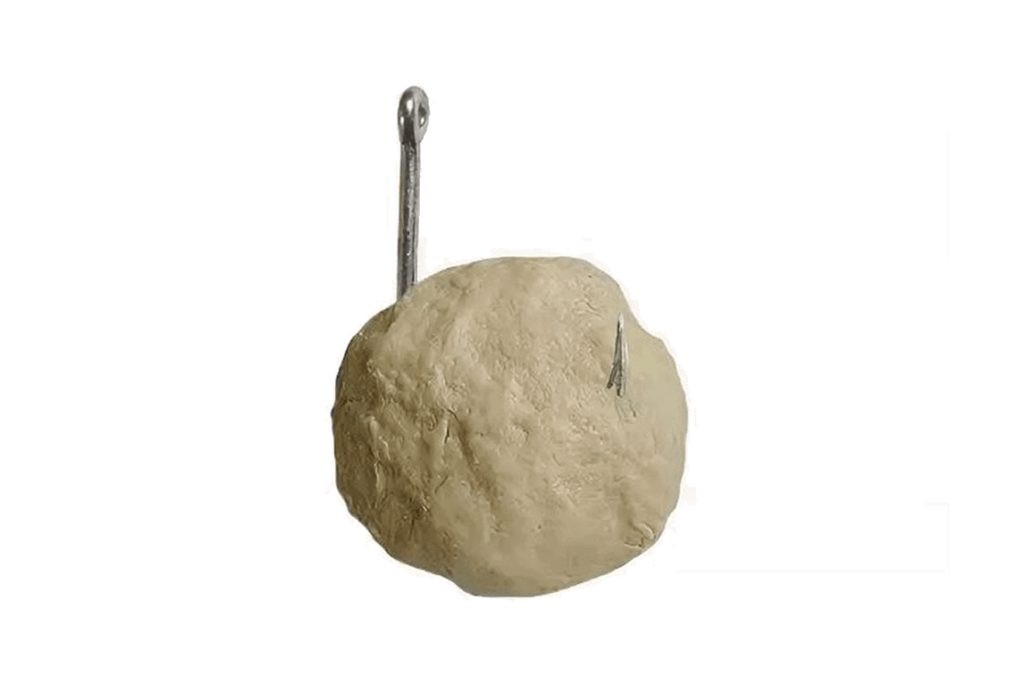
Using bread as bait for bluegill is a simple and accessible option. Bluegill are known to be opportunistic feeders and will readily bite on bread.
Here’s how you can use bread for bluegill fishing:
- Select the right bread: Fresh, soft bread works best for bluegill fishing. White bread or wheat bread are commonly used options. You can use slices, rolls, or even make dough balls from the bread.
- Prepare the bread: Tear or cut the bread into small, bite-sized pieces. You can also roll the bread into small balls. The goal is to create easily consumable bait for the bluegill.
- Hook the bread: Bluegill have small mouths, so you’ll want to use a small hook. Thread a small piece of bread onto the hook, covering the hook entirely or leaving a small part of the hook exposed. If you’re using a dough ball, simply place it on the hook securely.
- Cast and fish: Bluegill can be found near shorelines, docks, or structures in freshwater bodies like ponds, lakes, and rivers. Cast your line into the desired area and let the bread sink to the desired depth. Bluegill typically feed close to the surface or near the bottom.
- Use a bobber: To help detect bites, you can attach a bobber (float) to your fishing line. The bobber will sit on the water’s surface and indicate any movement or bites. When the bobber goes under or moves erratically, it’s likely a bluegill has taken the bait.
Corn
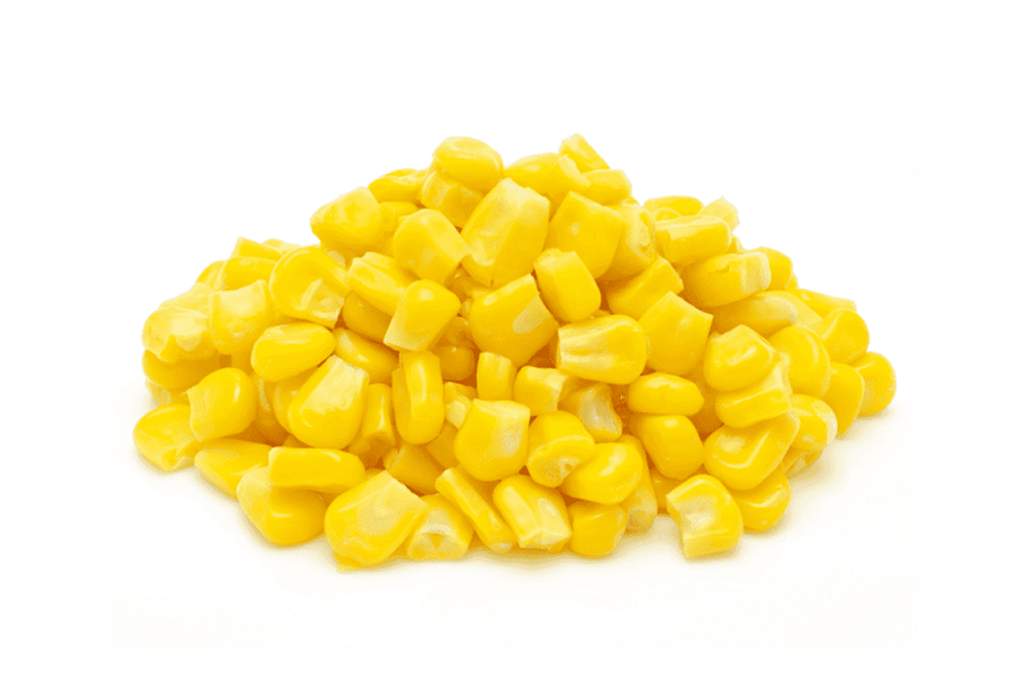
Corn is a popular and effective bait option for bluegill fishing. Bluegill are attracted to the scent and taste of corn, making it a readily available and affordable choice for anglers.
Here are a few tips on using corn as bait for bluegill fishing:
- Choose the right corn: Canned sweet corn or whole kernel corn from your local grocery store can work well. You can also opt for specialized fishing corn, which is often flavored or scented to attract fish.
- Hooking the corn: Bluegill have small mouths, so you’ll want to use small hooks. You can thread a few kernels of corn onto a small hook or use a treble hook to increase your chances of hooking a fish.
- Adding scent: Bluegill are attracted to scents, so you can enhance the effectiveness of the corn by adding scent attractants. There are various commercial scents available specifically for fishing, or you can experiment with natural scents like garlic or anise oil.
- Fishing technique: Bluegill are typically found near structures like weed beds, submerged trees, or rocks. Cast your line near these areas and allow the bait to sink to the desired depth. Use a bobber or float to suspend the bait at the right level, typically a few feet below the surface. Bluegill tend to bite quickly, so be ready to set the hook when you see the bobber move or feel a nibble.
- Chumming: If allowed in your fishing location, you can create a chum slick by scattering a handful of corn kernels around your fishing spot. This can attract bluegill to the area and increase your chances of catching fish.
Fly Fishing Flies
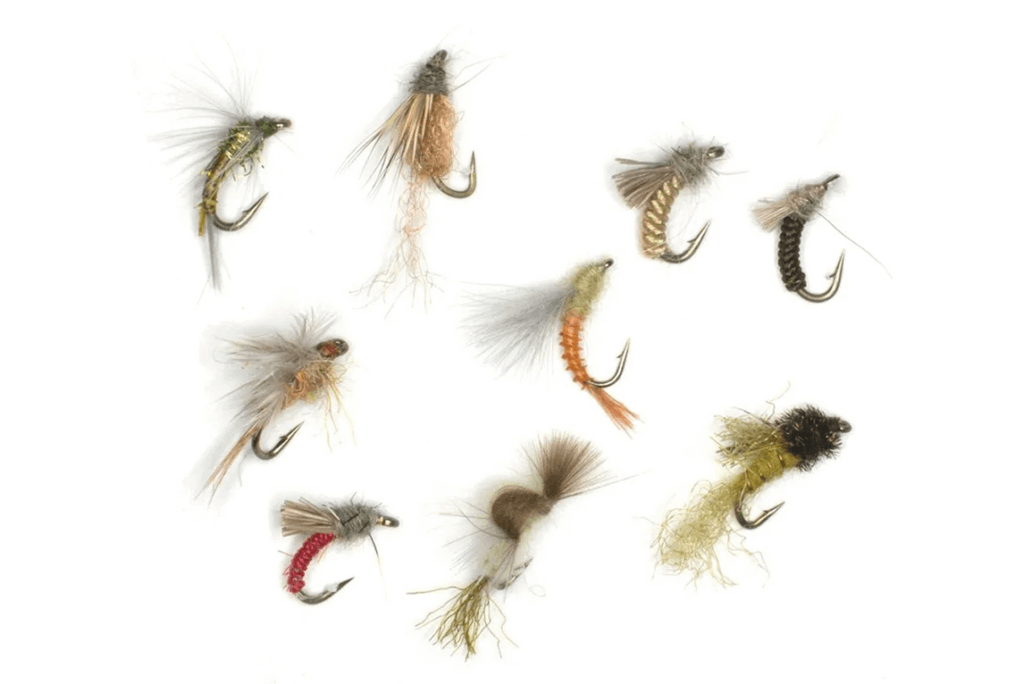
Fly fishing flies can be effective for targeting bluegill. When selecting flies for bluegill, it’s important to choose patterns that resemble their natural food sources, such as small insects, nymphs, or small baitfish.
Here are a few popular fly patterns to consider for bluegill fishing:
- Bluegill Bug: This is a simple and effective fly pattern that imitates various insects, such as beetles or grasshoppers. Bluegill often feed on terrestrial insects that fall into the water, and the Bluegill Bug can be quite tempting for them.
- Poppers: Poppers are surface flies that create a popping sound and disturbance on the water’s surface when retrieved. Bluegill are known for their aggressive topwater strikes, and using a popper fly can be incredibly exciting. Look for poppers with rubber legs or a foam body for added attraction.
- Woolly Bugger: The Woolly Bugger is a versatile fly pattern that imitates a wide range of aquatic creatures like minnows, leeches, or nymphs. It’s an excellent fly for bluegill, and you can try various color combinations, such as black, olive, or brown.
- Soft Hackle Flies: Soft hackle flies are wet flies that imitate emerging insects or small baitfish. They have a soft collar of feathers or synthetic fibers that give the fly a lifelike movement in the water. Try using soft hackle flies in sizes 12 to 16, with colors like tan, olive, or peacock.
- Pheasant Tail Nymph: The Pheasant Tail Nymph is a classic fly pattern that imitates small mayfly nymphs or other aquatic insects. Bluegill often feed on nymphs near the bottom, so fishing this fly with a slow retrieve or by using a sinking line can be effective.
Small Topwater Lures

Using small topwater lures can be an exciting and effective method for targeting bluegill. Bluegill are known to be surface-oriented feeders, and they readily strike at small lures that mimic insects or small baitfish on the water’s surface.
Bluegill are known for their aggressive strikes on the water’s surface, and topwater lures can imitate various insects or small baitfish that they feed on.
Here are some popular small topwater lures for bluegill fishing:
- Popper Lures: Popper lures are designed to create a popping sound and splash on the water’s surface when retrieved. They imitate injured or struggling insects, which can trigger the bluegill’s predatory instincts. Look for poppers in smaller sizes, around 1 to 2 inches, with a concave face that creates a commotion on the water.
- Bug Lures: Bug lures are designed to imitate different insects like beetles, spiders, or crickets. They often have small legs or wings that create lifelike movements when retrieved. Opt for bug lures in sizes ranging from 0.5 to 1.5 inches, and consider natural colors like black, brown, or green.
- Tiny Propeller Lures: Propeller lures have a small propeller at the front or back, which spins and creates a buzzing or whirring sound when retrieved. Bluegill are attracted to the vibrations and noise these lures produce. Look for propeller lures in sizes around 0.5 to 1 inch, and experiment with colors like chartreuse, white, or silver.
- Slider Lures: Slider lures are small, elongated lures that slide or skitter across the water’s surface when retrieved. They can imitate small baitfish or insects and can be particularly effective in calm waters. Look for sliders in sizes around 1 to 2 inches, and choose colors that resemble local forage, such as silver, gold, or natural patterns.
- Cork Popper Flies: Cork popper flies are fly fishing flies with a cork body that floats on the water’s surface. They can imitate various insects and create a popping sound when retrieved. These flies can be fished with a fly rod or even with a spin-casting setup. Look for smaller cork poppers in sizes around 1 to 2 inches.

